When it comes to deer hunting, sometimes the best way to figure out what deer are doing is to go back to scouting the old-fashioned way: by using deer sign. The clues deer leave behind, from scrapes and scat to rubs and beds, tell us everything we need to know about their preferred patterns.
You probably already have a good understanding of what deer sign look for, and in this article, we’ll shed light on what to do with all the intel. Read on for tips on incorporating deer sign into your hunting strategy.
Deer Scrapes
What To Look For
A deer scrape is an oval-shaped, bare patch of dirt, typically found underneath an overhanging branch. Deer create scrapes by pawing the dirt away while rubbing their forehead glands on the limb above. In creating a scrape, a deer leaves its scent behind for others to find, a seasonal communication ritual performed leading up to and during the rut.
A fresh scrape will look moist, carry a strong odor, and will not have any debris covering the dirt.
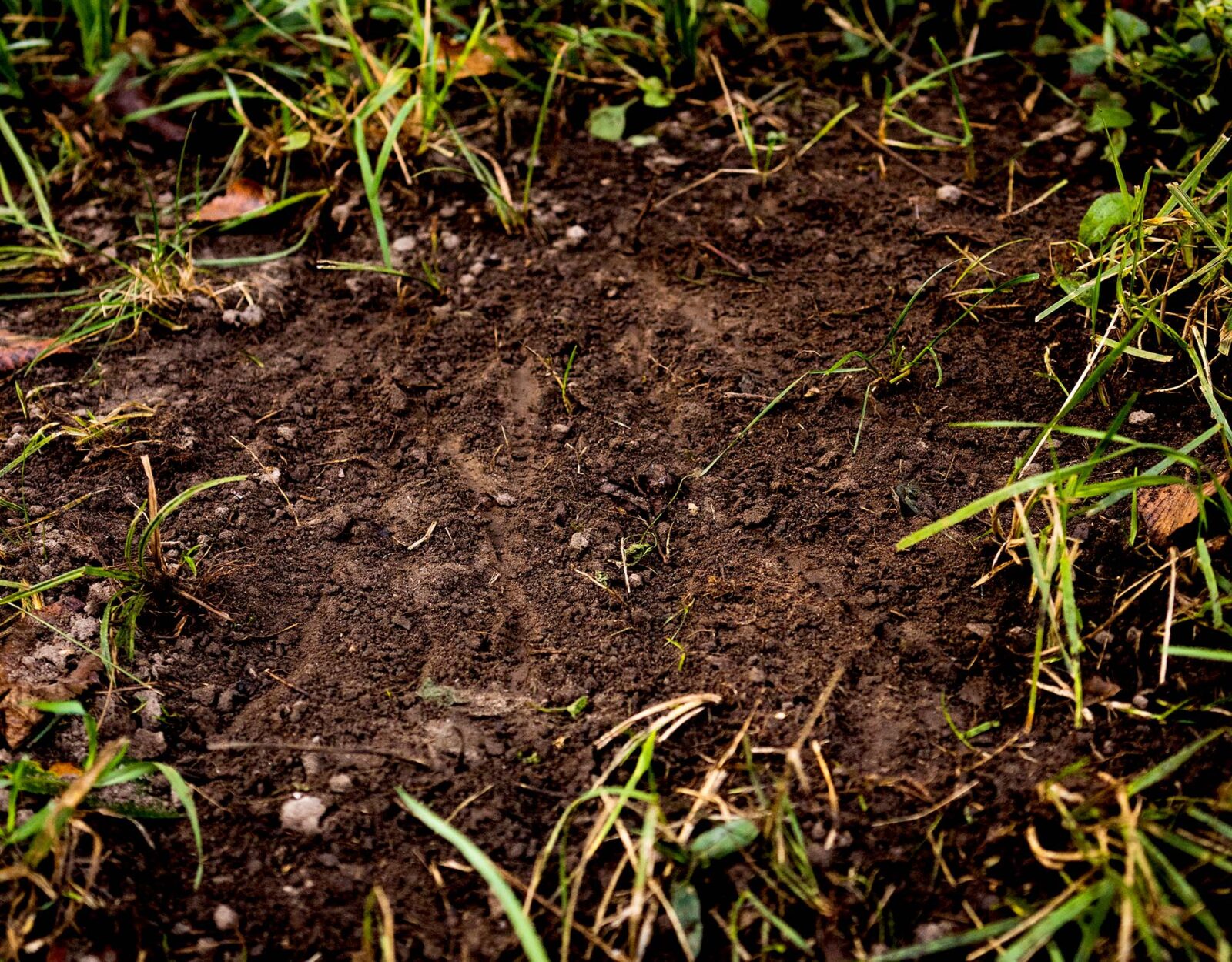
Relevance: When Deer Scrapes Matter (And When They Don’t)
Scrapes matter the most when they’re fresh. In the Midwest, a fresh scrape can be found from late August all the way into the winter. With, October and November generally yielding the highest concentrations of scrapes, that’s when you should be focused most on scrapes.
A fresh scrape, or lines of scrapes, indicates an area active with bucks. Typically, a buck will make a scrape close to his bedding area to announce that the area is his. He will then continually monitor the scrape to keep tabs on who’s in his territory. During the rut, an estrous doe will urinate in these scrapes, indicating she is ready to breed. To that end, bucks will also make scrapes close to doe bedding areas in hopes that an estrous doe will urinate inside them, letting him know that she is in estrous.
The only time I’m not worried about scrapes is late season. After the rut has come and gone, scrapes lose their value—deer are no longer using them as communication devices and they don’t offer us any hunt-worthy information.
Turning Insight Into Action
When you find an active scrape, look for thick bedding close by and work to analyze where and when a buck beds there. Placing a trail camera on the scrape will be your best bet to gather insight regarding the buck(s) using a given scrape. Then, you can start to analyze what wind direction sees the highest usage, or if the wind direction even seems to matter for that scrape. I like to run scrape cameras on video—the longer the better—in hopes of gleaning insight into direction of travel and overall demeanor.
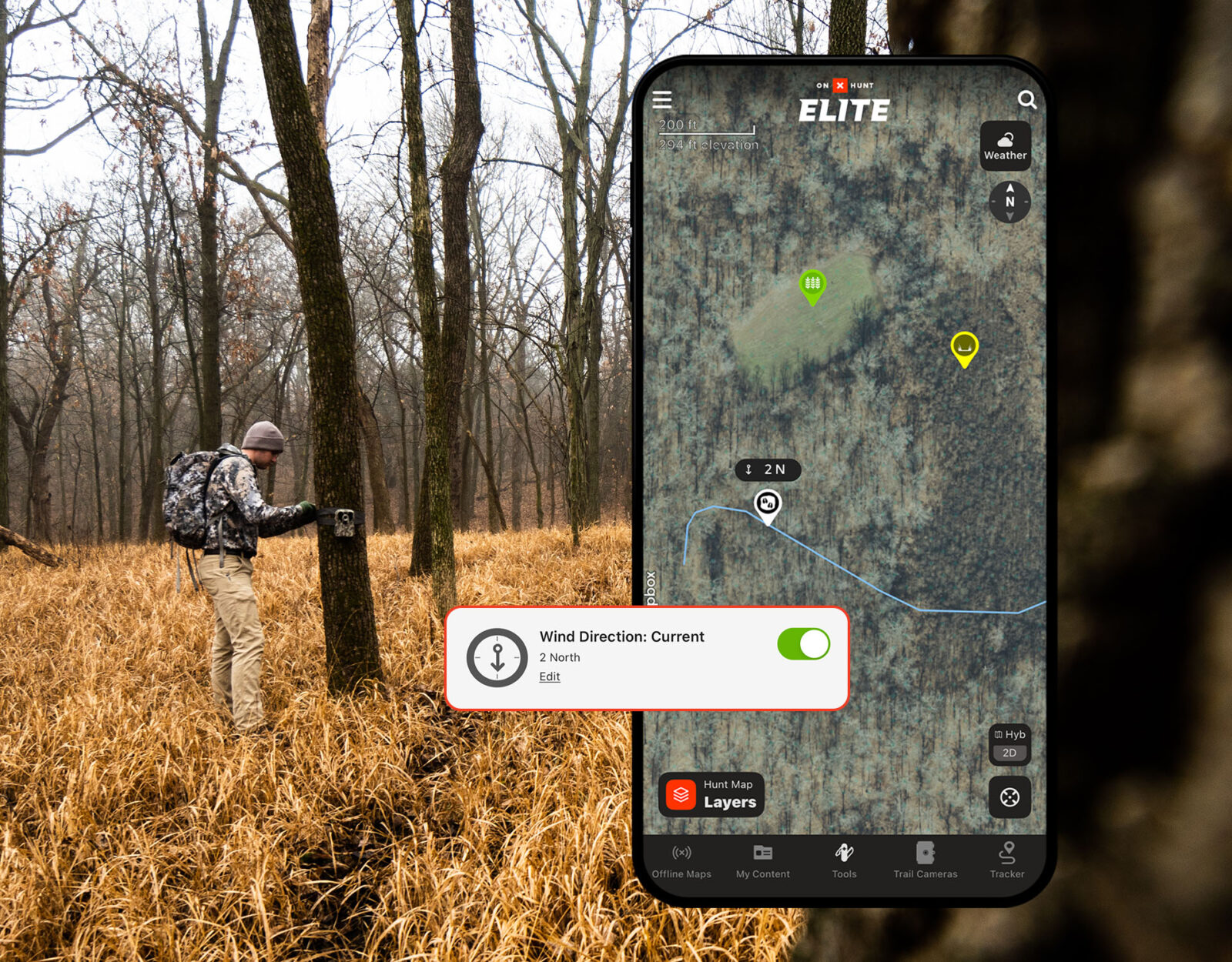
Tooltip: Tap into a Waypoint, scroll to “Waypoint Tools,” and select “Show Current Wind” to begin gleaning location-specific wind insights.
Deer Rubs
What To Look For
Rubs are abrasions on trees where the bark has been stripped away by a deer raking its antlers against the wood. Fresh rubs will appear shiny and orange, indicating the bark and tree were just shredded. There will be hair on the tree and you may see deep tracks where the buck dug into the ground as he made the rub.
Bucks create rubs to either shed velvet or show territorial dominance. When a buck creates a rub, his forehead glands leave his scent behind. So, similar to scrapes, rubs are a signpost for other deer to smell and take note of. Rubs can be found on single trees, in clusters, or in strings of multiple trees, which create a “rub line.” If you find a rub line, it’s a good indicator you’re in a buck’s core bedroom area.
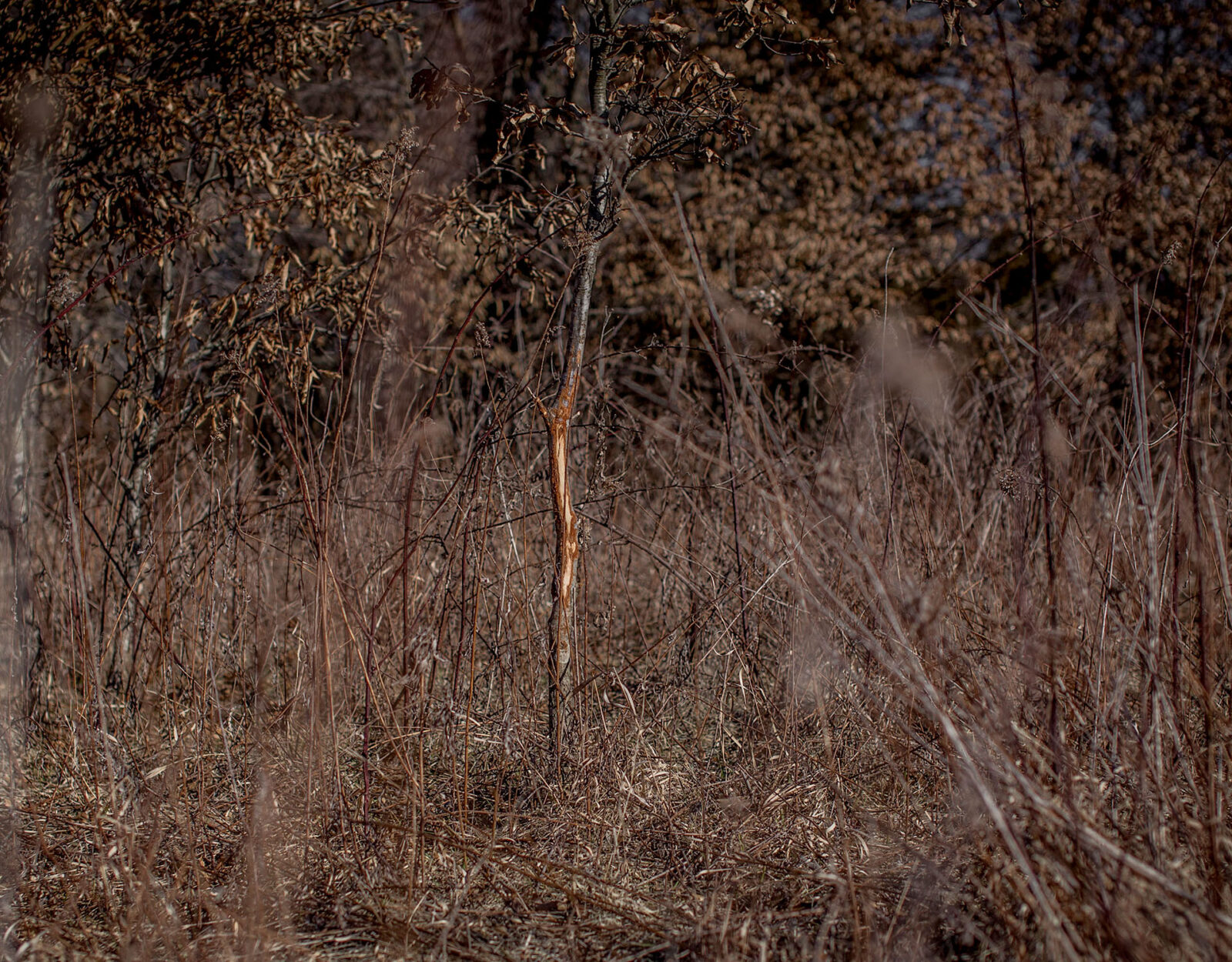
Relevance: When a Deer Rub Matters (And When It Doesn’t)
Fresh rubs start to appear in late August and early September as velvet is being shed. These rubs are strictly to rid the antlers of velvet. As September rolls into October, you’ll see more fresh rubs pop up. Here, bucks are making rubs to display dominance and take over certain areas.
Rubs made in the pre-rut offer important clues to where a buck is currently calling home. As the rut gets closer, more rubs will pop up closer to feeding areas and doe bedding areas as more and more bucks seek the first estrous doe. When I find hot, fresh rubs in late October or November I am eager to hunt those spots, as it’s telling me that bucks are here right now and for good reason.
Turning Insight Into Action
When you find a fresh rub, note which side of the tree the rub was on so you can try to figure out the buck’s direction of travel. These clues can help you decide where a buck is bedding or feeding.
Deer Tracks and Game Trails
What To Look For
While the “cool factor” of rubs and scrapes can grab a lot of attention, there is no better sign that deer are around than seeing a ton of tracks and some used game trails.
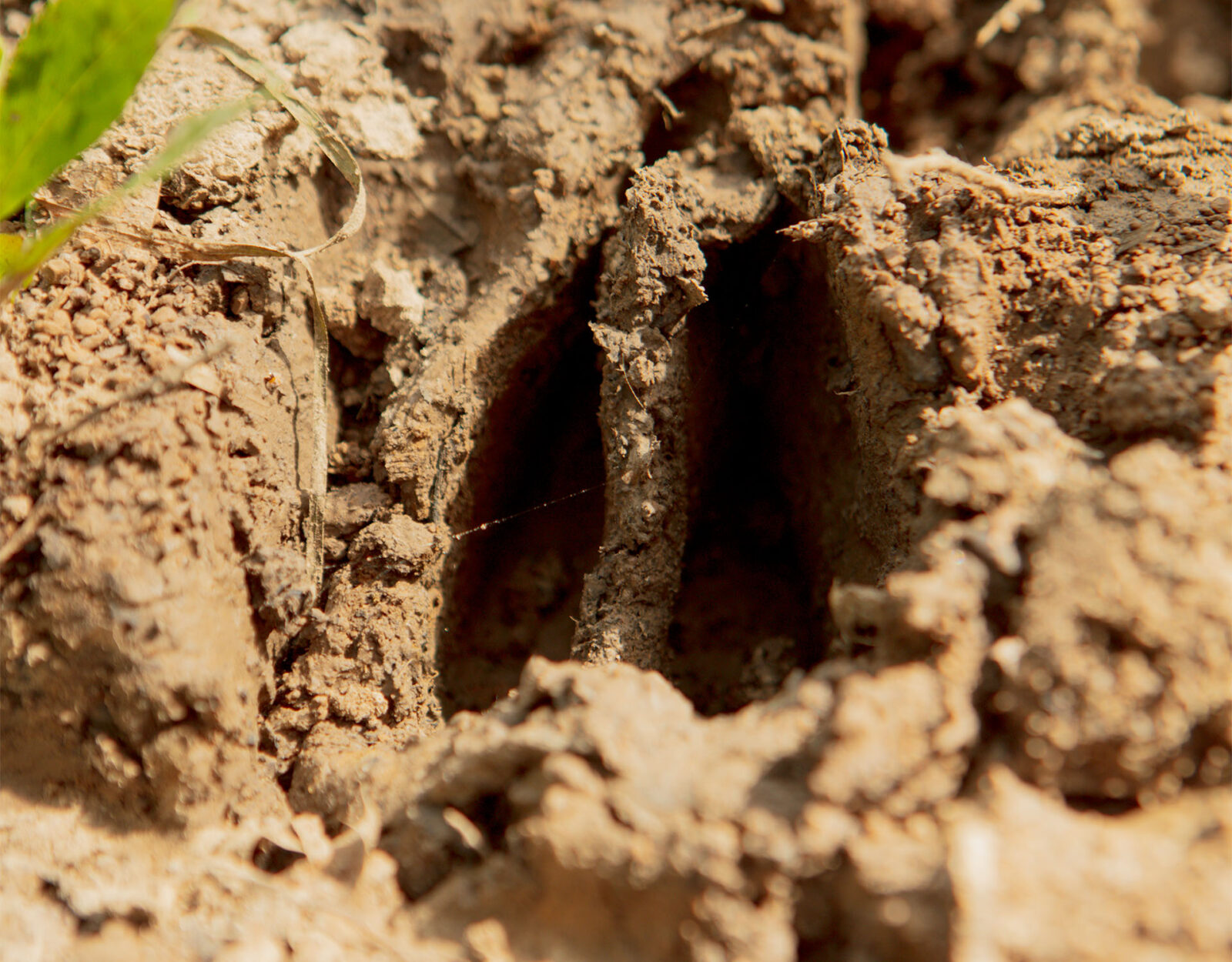
You’re looking for fresh tracks and well-loved trails. Crisp, sharp deer tracks mean it’s a newer set, while dull edges are a sign of an older track. Trails that are beaten down, free of debris, have fresh sign and scat on them, and look well-defined tell me that a trail is being used heavily and often.
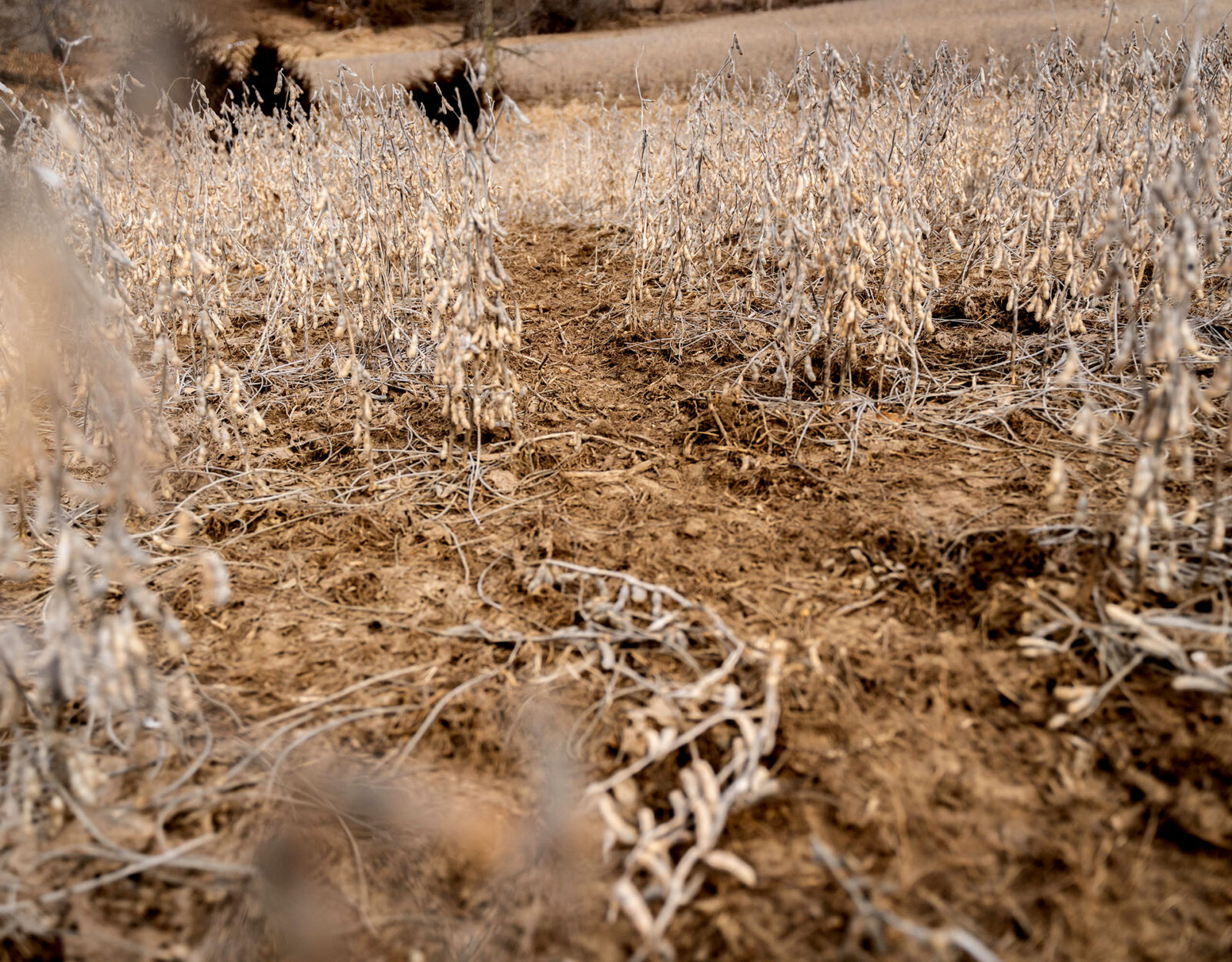
Relevance: When Deer Tracks and Trails Matter (And When They Don’t)
If I see fresh tracks or a well-defined game trail during hunting season, I hunt these areas immediately. If I’m in an area with no fresh tracks and no beat-down trails, I will not waste my time and efforts there. The area lacks either food or bedding and isn’t preferred by deer right now.
A go-to tactic of mine is to use the Tracker tool on properties I hunt to walk all the deer trails in an area. Recording the trails helps build a picture of the areas of intersection and pays dividends in understanding when particular travel patterns are used and when they aren’t.
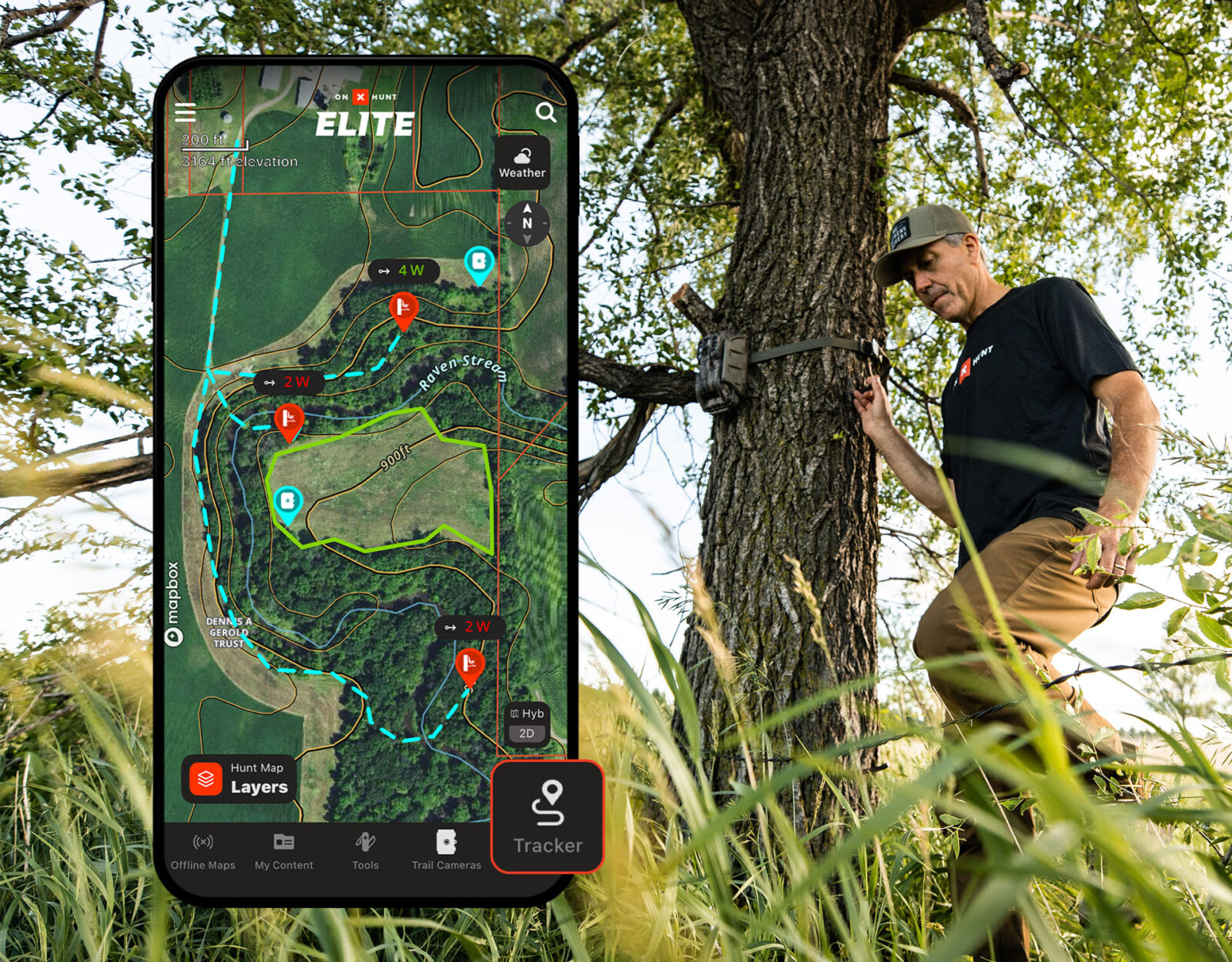
Turning Insight Into Action
Tracks tell us not only the direction of a deer’s travel, but also where he came from. We can backtrack a set of tracks to where this deer was feeding or bedding, which unveils valuable information in figuring out local deer patterns.
Deer Scat
What To Look For
Deer scat can be broken down into two categories: buck scat and doe scat. Buck scat will typically be larger and the droppings will clump together into a pile. Doe scat will generally be smaller and the individual droppings will be scattered across the ground.
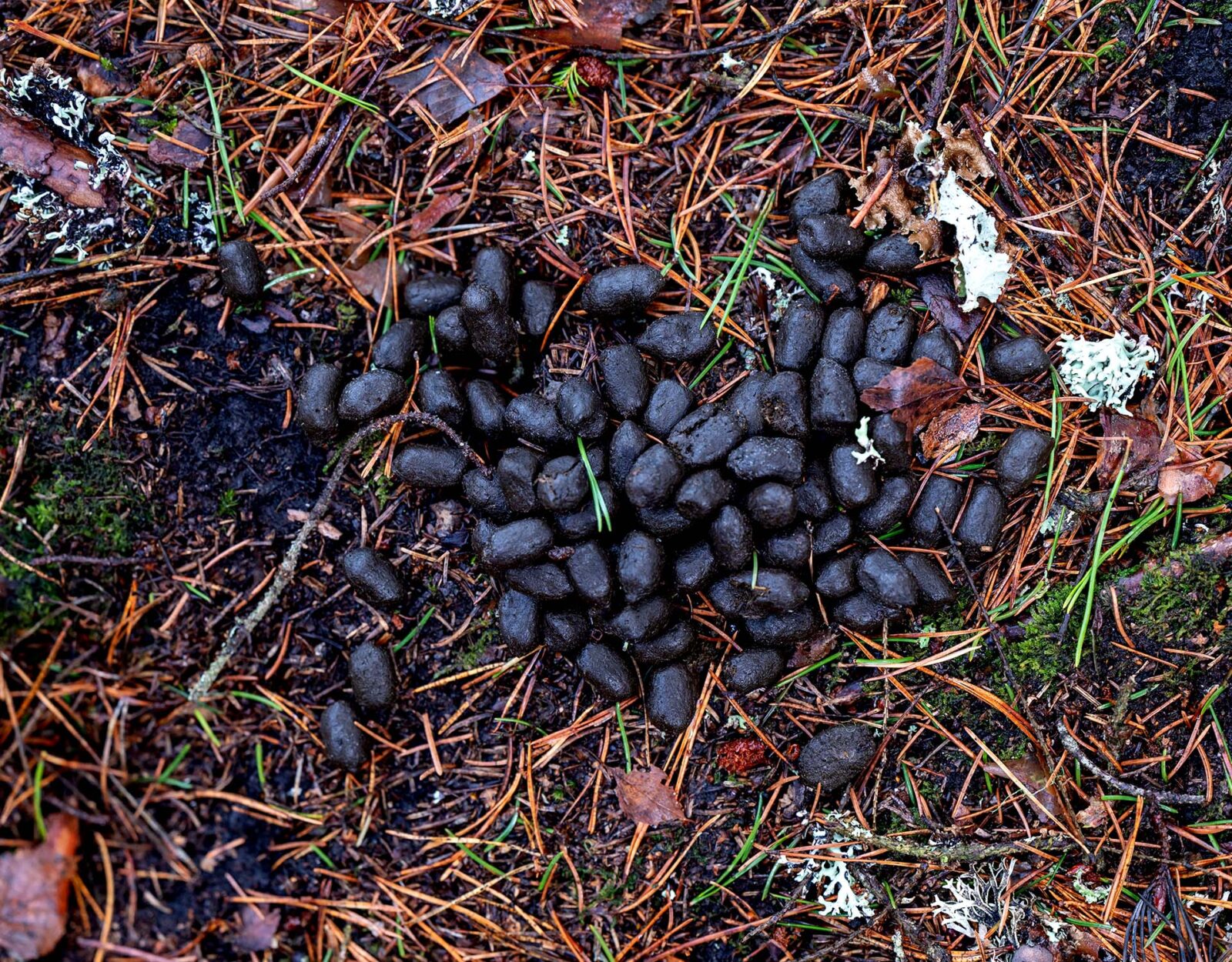
Relevance: When Deer Scat Matters (And When It Doesn’t)
Like with most deer sign, scat matters most when it’s fresh. Fresh scat will look moist or wet to the touch. If I find fresh scat, this tells me deer are probably still in the area. And, seeing fresh scat always makes me ask the “why” questions. By wondering “Why was this deer here?” I can start to look for clues. For example, if I find a bunch of fresh scat in a field, I’ll assume the deer are feeding there often and the area should be hunted immediately.
If I see old, dried-up-looking scat, then I know that even though the area has held deer, it isn’t a priority right now. So, scat can be a useful tool in judging whether an area is worth hunting currently.
Turning Insight Into Action
When you’re looking for an area to hunt, if you don’t see fresh scat, focus your efforts elsewhere.
Trail Camera Appearances
What To Look For
With today’s trail camera technology, every picture can be stamped to give you the date, time, temperature, and even moon phase from that exact photo. In addition to paying attention to these details, I’m also noting the wind direction that day as well as which direction a deer was coming from and going to.
The direction of travel in the morning is typically showing me where this buck is headed to bed. In the evening, the buck’s direction of travel is likely showing me where he’s headed to feed (and where he came from is probably where his bed can be found). I can then jump on onX Hunt and look for bedding areas and feeding areas in the direction he was headed.
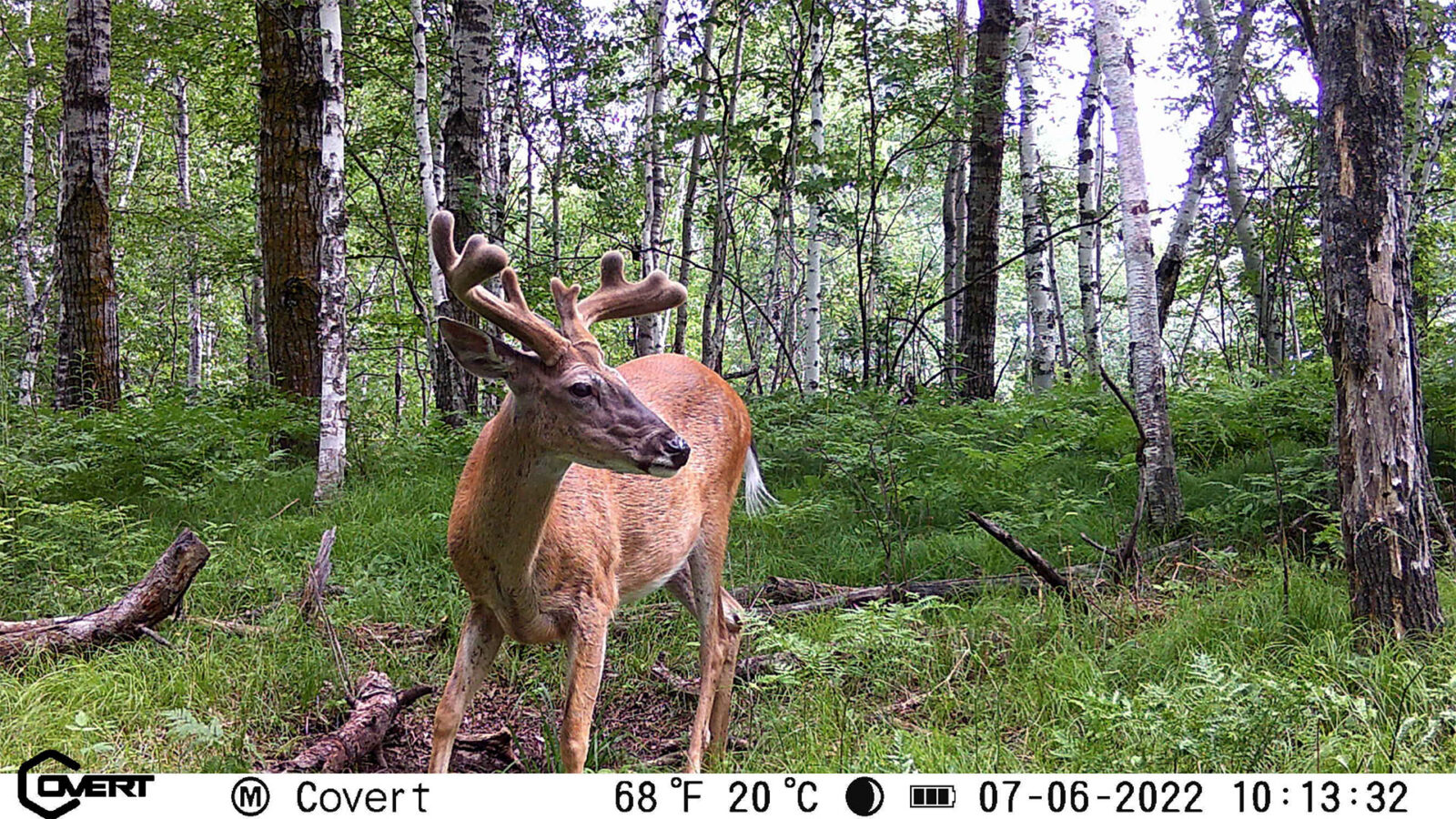
Relevance: When Trail Cam Data Matters (And When It Doesn’t)
Early season gives you the biggest opportunity to harvest a buck based on trail camera intel. Finding a buck in an early season pattern in August and September can yield one heck of an opening day if he sticks to the pattern long enough.
As fall rolls on, I’m paying attention to daylight vs nighttime photos. I expect to see a ramp-up of daylight photos come mid to late October when bucks are feeling frisky and getting amped up for the rut. Once I see a ton of daylight activity, I’m gearing up to start hunting aggressively in hopes of catching a buck moving around in daylight as the rut nears.
Then, when the late season rolls in, you stand the chance to find a predictable buck using a consistent bed-to-food pattern.
Turning Insight Into Action
Deer live and die by their nose; by using pictures and the wind direction for that day, you can identify a pattern of which wind direction a buck likes best. The greatest information a hunter can have, in my opinion, is the preferred wind direction of the deer in that area. This will unlock a ton of information, like what days to hunt based on the wind and what area to hunt based on those “best” wind days.
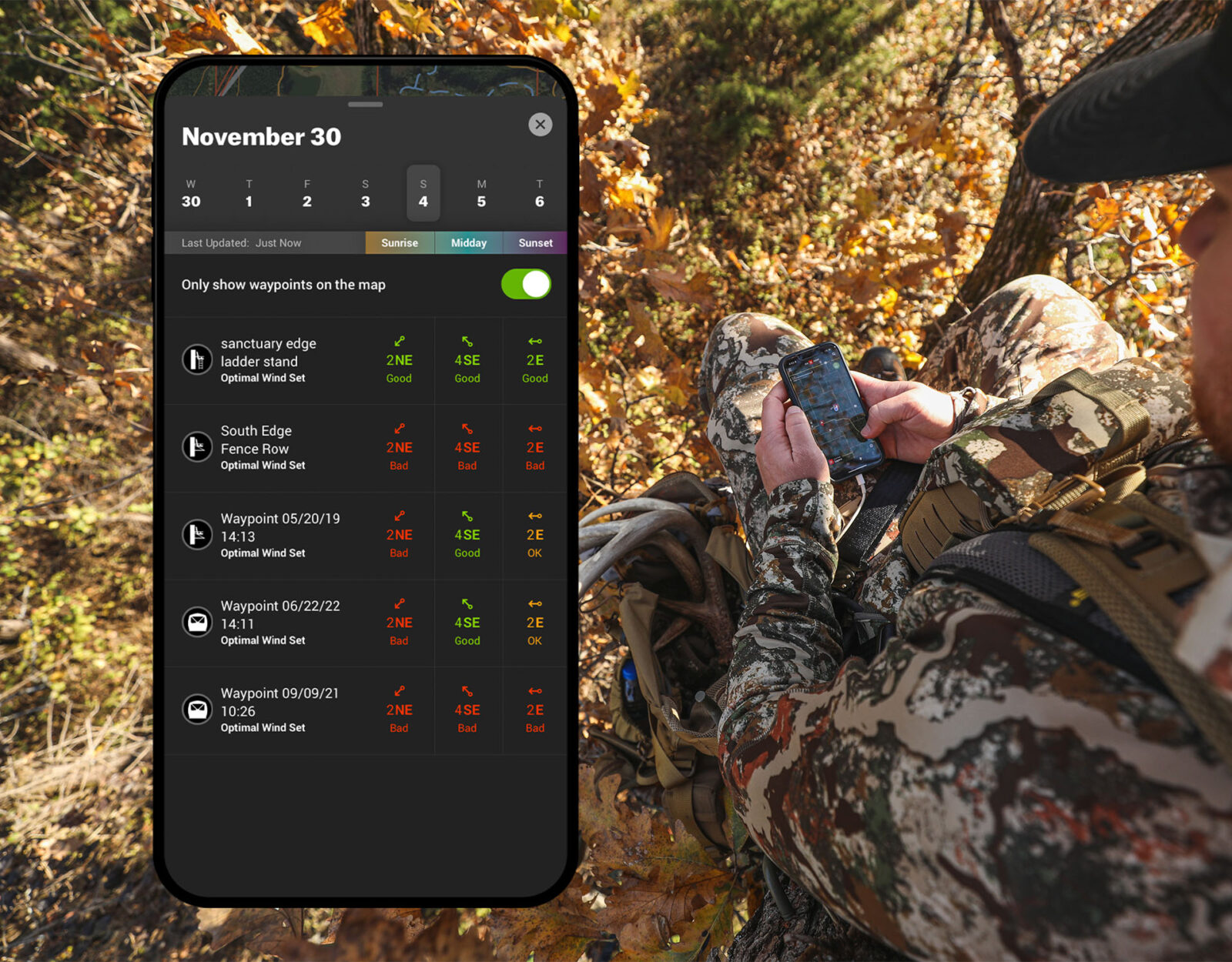
Deer Beds
What To Look For
Deer beds are large, oblong patches of matted ground. Deer like to bed on steep ridges and hillsides, but want a flat spot for their bed, so you’ll usually see deer beds in the flatter undulations of the land. If the bed is fresh, you will see scat and hair and the bed will almost look clean and shiny. A lot of deer will bed in thicker cover or on high points because of the security those features give them.
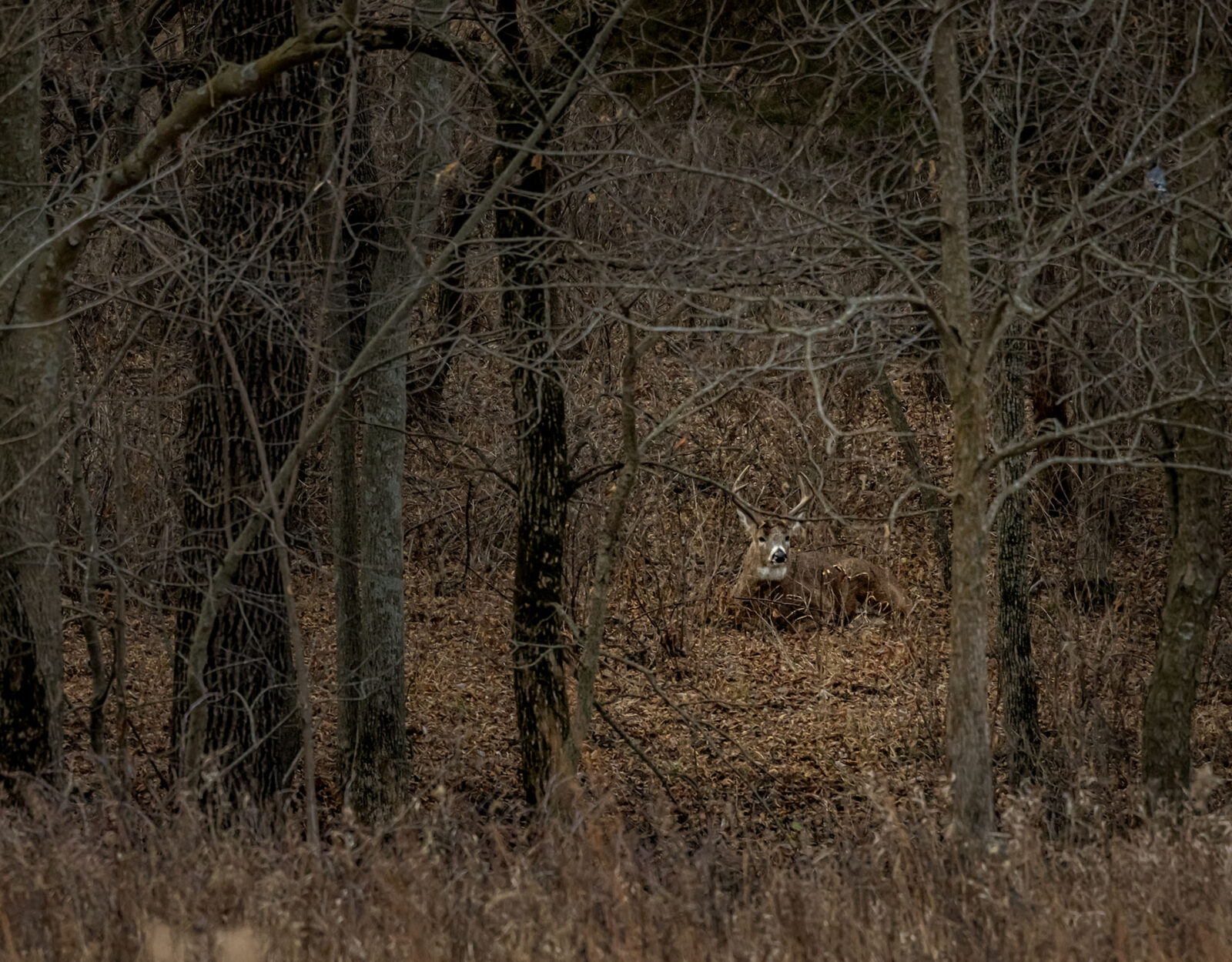
Relevance: Why Deer Bedding Areas Matter
Deer beds are sometimes overlooked because they’re not as flashy as a rub or a scrape. But deer beds provide critical intel. A buck’s bed is a place that allows him to stay alive. He can see, smell, or hear danger coming and have time to escape unharmed. Contrary to popular belief, I do not believe bumping a buck from his bed ruins things. That bed did its job and that’s why he comes back. Think of it like a security system for your home. If your security system detects danger and goes off, it did its job. You won’t go buy a new one because this one did exactly what you wanted it to do—it kept you safe.
Does will typically bed together. If you find a bunch of doe beds during the rut, those are good places to hunt as bucks will often be in the area cruising for an estrous doe. Bucks usually bed alone and you will find rubs and scrapes nearby indicating that this is “his” area.
Turning Insight Into Action
Set up a tree stand on the downwind side of deer beds in hopes of catching a buck cruising doe bedding areas, or a buck slipping back into his bed for a mid-morning sleep. Generally, you should get in tight, within 50-60 yards of the beds so the buck is within shooting range if he comes strolling by.
Set up a tree stand on the downwind side of deer beds. Generally, you should get within 50-60 yards of the beds so the buck is within shooting range if he comes strolling by.
Other Whitetail Intel To Note
While not deer sign, per se, there are a few additional pieces of intel you should make note of while you’re out scouting for deer, such as edge habitat, food sources, and water sources.
Edge Habitat
Edge habitat, where two different types of environments come together, is popular among many species, including deer. Deer like edge habitat for the ease of travel and security it provides. So, when you’re out looking for deer sign, keep your eye peeled for edges, too.
An example of edge habitat would be in farm country where a standing cornfield meets the timber. Deer can walk the edge of the corn and timber without being inside the corn. They can see, hear, smell, and move better on the edge. Another example would be standing pines that match up to a clearcut or a gas line right away. One side is thick and the other is not, which creates an edge where deer can easily travel. They may bed in the thick pines and then feed in the clearcut.
The Hunt App has multiple Map Layers to help you find edge-to-edge habitat, including the Acorn-Producing Oaks Map Layer and the Deciduous vs Coniferous Map Layer.
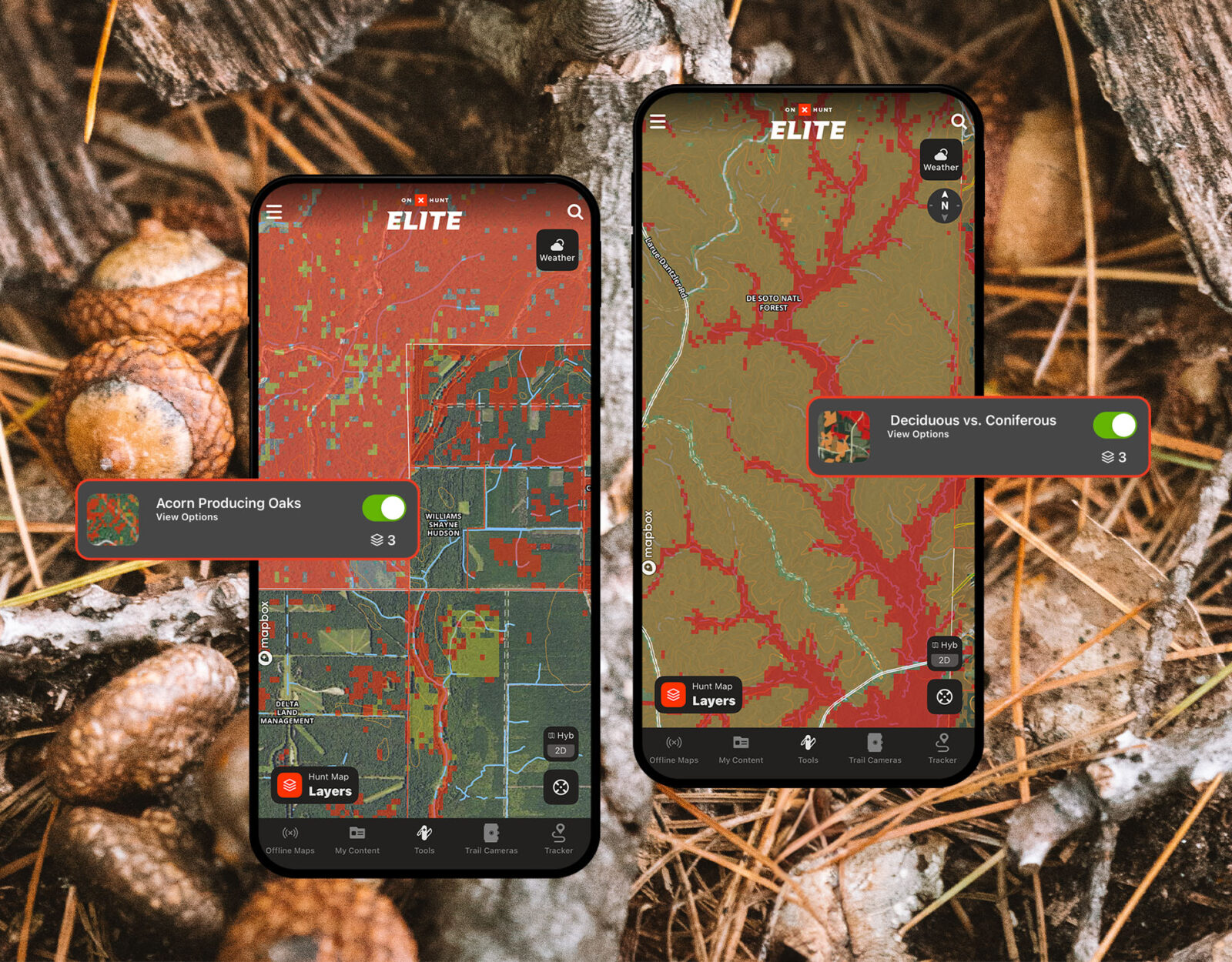
Food Sources
Locating deer food sources can be simple in agricultural country, yet tricky in the big woods. In ag country, look for soybean fields, corn, alfalfa, or milo. In big woods settings, acorns rule the roost as well as native grasses and different types of green feed like green briars and crabapples.
While scouting for potential food sources, I’m keying in on which ones also have the freshest sign. If I find a bean field littered with scat and fresh tracks and worn trails leading to it, I immediately mark this spot as an active food source. If a food source doesn’t showcase fresh sign, I won’t spend time on it. I want to stay one step ahead of the deer, not behind it.
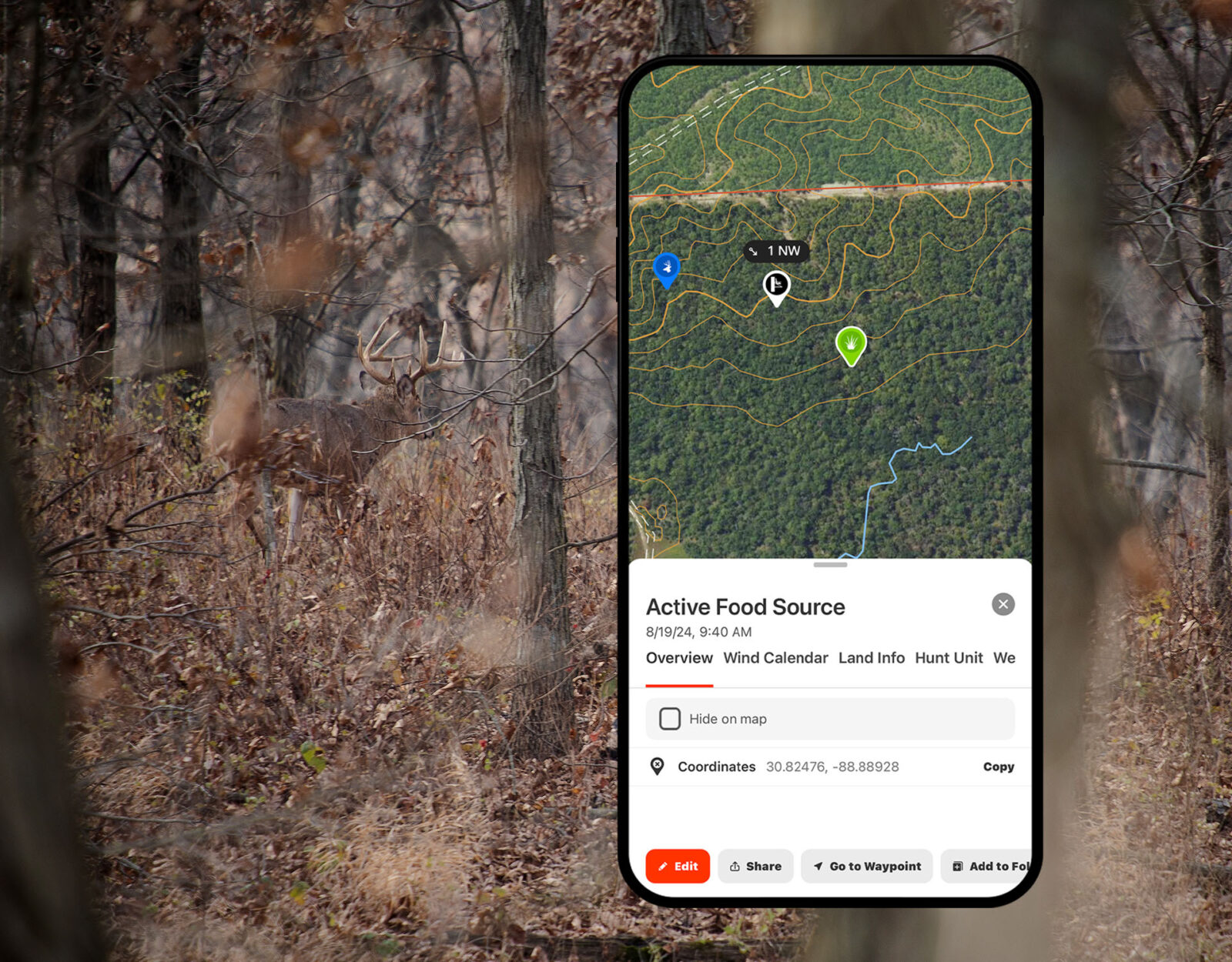
Water Sources
Typically, when you find a water source, you will find fresh deer sign. Deer must drink water to stay alive, especially during the warm weather months. During the rut, a deer will need to drink daily. I like to key in on secluded water sources, like hidden creeks, streams, and small ponds as the added cover gives a deer more of a security factor when they come to get water. Putting a trail camera on a water source is a great way to monitor when and how often deer are drinking and these can be fantastic areas to hunt over.
Closing
Being able to decode deer sign gives us all the information we need to be successful. By locating sign and diagnosing how fresh it is, we gain insight into what the deer are currently doing and can better predict what they might do next.
Read the sign, let it tell you what you need to know, and you’ll be more successful this fall, I’ll guarantee it.
The #1 Hunting App
Document whitetail intel with onX Hunt to get the most out of the season.